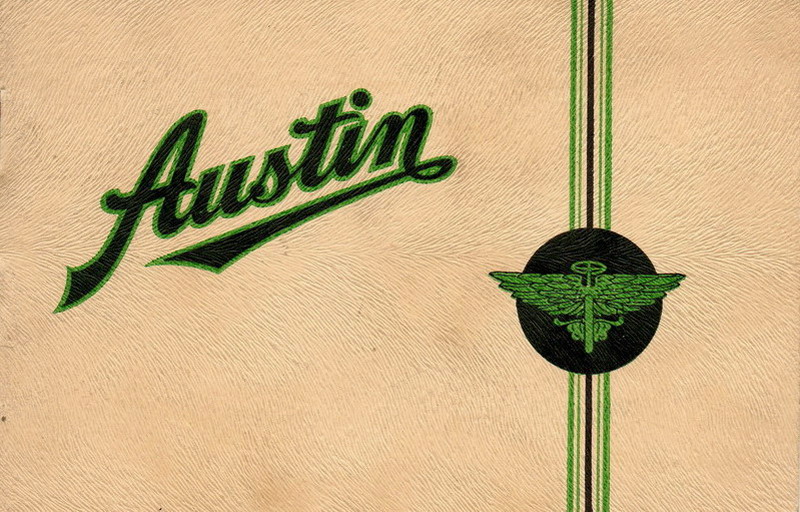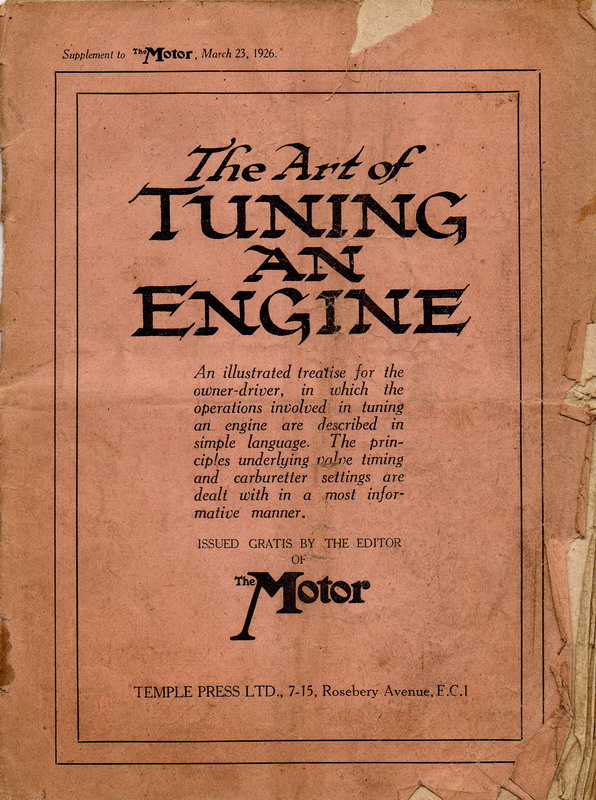Last updated: 1st December 2024
From the Past
items from 1920/30s magazines.
This is a series in five parts of articles recalling the years when our 'Sevens' were on the roads. It is only a 'snapshot' of advertisements and articles which appeared in the Motoring Magazines during the 'Austin Seven' era, and is not intended to be a comprehensive record.
There are so many suitable items that to include them all would be a wee bit boring!
In Part 1
Advertising in Magazines;
Manufacturer's advertisements;
Promotional Films;
Austin Motor Company
Brochures; Technical Advice;
In Part 2
Spares;
Servicing and repairs at Austin Dealerships;
Feature Articles;
Maps and Atlases;
Touring and holidays;
In Part 3
Complimentary
Magazines: Specific motoring advertisements;
Insurance;
Motoring accessories;
'Sunday afternoon' accessories.
In Part 4
Classified
Advertisement; The Thirties
Era - Cars in Context;
A Matter of Worth;
Notes
about motoring in 1947
In Part
5
WW11 Petrol Rationing; War Emergency Regulations.
Advertising in
Magazines
Soon after the first cars were seen
on the roads motoring magazines were produced; 'The
Autocar' was founded in 1895 and now claims to be the world's oldest car
magazine. 'The Motor' appeared in 1903, later to be named 'Motor',
and was taken over by 'The Autocar' in 1988. In 1912 Temple Press produced
the 'Cyclecar
Magazine', later to become 'The Light Car &
Cyclecar Magazine' which covered cars of up to 1500cc. Another early magazine was 'Speed'.

The
motor manufacturers also produced their own magazine, usually available
from their dealerships. The Austin Motor Co. Ltd. produced 'The Austin
Magazine', a substantial publication of over 100 pages which appeared
monthly. This covered the announcement of new models and subsequent
road tests; servicing guides in the form of a Motograph consisting of a
few pages of text with captioned photographs showing the steps involved.

All magazines carried advertisements for the familiar motoring products,
accessories and services of the time; independent road tests on new
models; text about travel and places to visit; plenty of DIY hints and
tips and answers to readers technical questions. 'Practical Motorist'
magazine appeared in the early 1930s and ran for many years, giving
motorists a some practical tips on improving performance, maintenance
etc.
The advertisements carried in these magazines are both interesting and
educational and worth reproducing.
Manufacturer's advertisements
The Austin Motor Co., along with the other motor manufacturers of the
time, could only rely on simple adverts in these magazines and on
advertising hoardings.

As
an advert should create, and make, an immediate impact, its position in
the magazine was paramount, and attracted the appropriate cost,
depending upon whether it was on the front cover, the back cover, inside
either cover or to be found amongst the many pages.
The front cover adverts had to be prepared to a higher specification as
they were in full colour, those on the back cover had less colour,
whilst those within the magazine pages would just be black and white for
few magazines went to the expense of colour, and better quality paper,
internally unless it was for a special feature. All adverts were
limited by the skills of the artists and the ability of the printer
within the limitations of the printing process available at the time.
By today’s standards the coloured drawings that appeared on the front cover were fairly crude; being an artist’s impression of a typical scene in which the manufacturer envisaged their product would have maximum appeal. The picture was drawn so that it ‘was worth a thousand words’ for it had to have immediate impact and the merest detail – name, price and a punch line which would continually appear – hence The Austin Motor Co. hit on some strap lines: “You buy a car BUT you invest in an Austin” and “The finest small family car in the world” as catch-all phrases and used them for many years.
 The
full page adverts which appeared within the magazines were black and
white with more technical detail, supported by a sales pitch pointing
out the ‘special features’ and the full range of that model, including
price and the factory-fitted extras available at the time of placing the
order.
The
full page adverts which appeared within the magazines were black and
white with more technical detail, supported by a sales pitch pointing
out the ‘special features’ and the full range of that model, including
price and the factory-fitted extras available at the time of placing the
order.
Apart from the major manufacturers the specialist coach-builders who
built their own body onto a chassis and engine, were in competition with
the main Company and were also placing similar adverts in the press so
those for Arrow, Gordon England etc. were also commonplace. Other
adverts were for the products of the motor spirit companies and small
firms making accessories to fit in, on and around the cars. Examples
appear in ‘The Austin Seven Source Book’.
This article, written by Doug Castle, originally appeared in Focus, December 2007, pp 14-16
NB - We hear about the 'Roaring Twenties' but we should
remember that 'The Great Depression' and financial hardship extended
throughout most of the years from 1920 to WWII and so cars were being
introduced to the public during a prolonged period of financial
uncertainty for many families. It was, however, an age of low inflation
and low interest rates and so wages and prices remained virtually the
same for many years. Note the similar launch prices for Austin Sevens
from 1923 to 1938; a 1925 'Chummy' was £149 and the 1937 'Big Seven
Sixlite' was £155. See 'A
Matter of Worth' in part 4.
Promotional Films
In the spring of 1938 The Austin Motor Co was promoting their range of
cars with film evenings at the main dealerships across the country. One
of these was held at HTP Motors Ltd of Truro, previously Hosken,
Trevithick and Polkinhorn, on 29 March to 1 April.

From: The Austin Magazine, April 1938 p689.
The original facade of the building still exists as the Pannier Market, no doubt once the workshops, with the showroom and office area now split into eight retail units. On the original facade note the petrol pumps on the very corner of the building, but presumably cars parked on the road and not on the pavement, with the pipes swinging out so that pedestrians could still walk past whilst petrol was being discharged - and some of those pedestrians were smoking!
This item appeared in CA7C Seven
Focus, May 2010, pp 18-19.

One
of our members visited Essen, west Germany, over Easter 2010 and visited
the Techno Classica Car Show, the largest of its kind in Europe. There
were 168,900 visitors from 38 countries, 1036 exhibitors, over 110,000
square metres of exhibition floor space in 17 halls, approximately 2500
automobiles for sale and over 130 presentations from clubs and museums.
Amongst these was the top line tan coloured Swallow, with a ‘Supplied by
HTP Motors, Lemon Quay, Truro’ badge on the dashboard.
This item appeared in CA7C Seven Focus, May 2010, pp 16-27.


One of our members has a dashboard badge fitted in his 1934 RP Saloon
and an advertisement from a copy of the Truro Advertiser in 1934 showing
that the company was able to supply several makes of new cars.
 However,
another local garage, Berryman's, who also had several local branches,
may have had a better Austin based sales and repairs service than HTP
Motors, as their Penzance garage dealt with Austin based taxis.
However,
another local garage, Berryman's, who also had several local branches,
may have had a better Austin based sales and repairs service than HTP
Motors, as their Penzance garage dealt with Austin based taxis.
Offered by Sandy Croall, CA7C Seven
Focus, June 2010 p14.
Austin Motor Company Brochures
 All manufacturers produced brochures so
that the prospective purchaser could take them home and study them away
from the pressures of the showroom salesmen. These typically described
the main attributes of the model(s), the basic need-to-know facts -
price; top speed; mpg and the colour schemes available. Well, what more
do you need to know?
All manufacturers produced brochures so
that the prospective purchaser could take them home and study them away
from the pressures of the showroom salesmen. These typically described
the main attributes of the model(s), the basic need-to-know facts -
price; top speed; mpg and the colour schemes available. Well, what more
do you need to know?
One of the first was for the Chummy. Now a much sought after document.

The
Austin Motor Co. Publication 1472, a 16 page coloured booklet, appeared
in October 1936 to introduce the Ruby MKII and the new three-bearing
crankshaft 17bhp engine.
Also mentioned were the Pearl Cabriolet; the Nippy two-seater; the Open
Road Tourer and the Two-seater.
A page showed the cut-away engine and technical information was 2 pages
of General Specification.

The Austin Motor Co. Publication 1474 was also a 16 page coloured
booklet which covered the range, and prices, of larger Austin models and
the new Ruby MKII.



The Austin Motor Co. then appears to have moved from multi-coloured booklets to
simple two colour, single fold leaflets for the Ruby and the 'Big Seven' with
Publication No 1647 specific to the 'Forlite' which appeared in March 1938.
Technical Advice
The Austin Magazine included technical advice on how to do the simpler
maintenance tasks, produced in the form of a pictorial 'Motograph' to
supplement the text, for the whole range of Austin models. See
Ignition OK? as an example.
There was also the series 'How It Works', a short succinct explanation of how various parts of the car worked ie 'The Gear Change', to help educate the less technically minded.

from: The Austin Magazine, April 1938 p713.
The general motoring magazines soon realised that the early owners of cars needed to have some basic knowledge of the workings of the car in order to carry out some of the basic maintenance.

'The Motor' issue of March 23 1926 had a supplement, a 16 page booklet
'The Art of Tuning an Engine' to inform owner-drivers of the workings of
the engine, the principles underlying valve timing and carburettor
settings and how to maintain good engine performance.
The motoring magazines also offered technical pages, although not
specific to a make of car. Supplementing these were the efforts to
answer reader's questions; 'Replies to Readers Queries' appeared in
Practical Motorist whilst The Austin Magazine published 'Queries of the
Month' which were answered by The Austin Motor Co rather than
knowledgeable journalists.

From: The Austin Magazine, February 1938 p489.
Road Tests of new models were another feature, the format of which is still followed in today's journals; the intention being to give the reader some informed opinion on the performance and strengths of the new model. The manufacturer's magazines were intended to boost sales whilst the independent journals were more inclined to offer comparisons with the similar models of other manufacturers.
The Austin Motor Co. enjoyed sponsorship by Wakefield/Castrol to produce the 'Austin Seven Lubrication Chart and Handbook in April 1931.

Step by step diagrams of all parts of the car, the engine, back axle etc where oil and grease were required at regular intervals.

At the back was a small fold-up lubrication chart, an ideal 20 page pocket-sized booklet for the motorist having to undertake these routine tasks. (This is not the full chart.)

Spares;
Servicing and repairs at Austin Dealerships;
Feature Articles;
Maps and Atlases;
Touring and holidays.